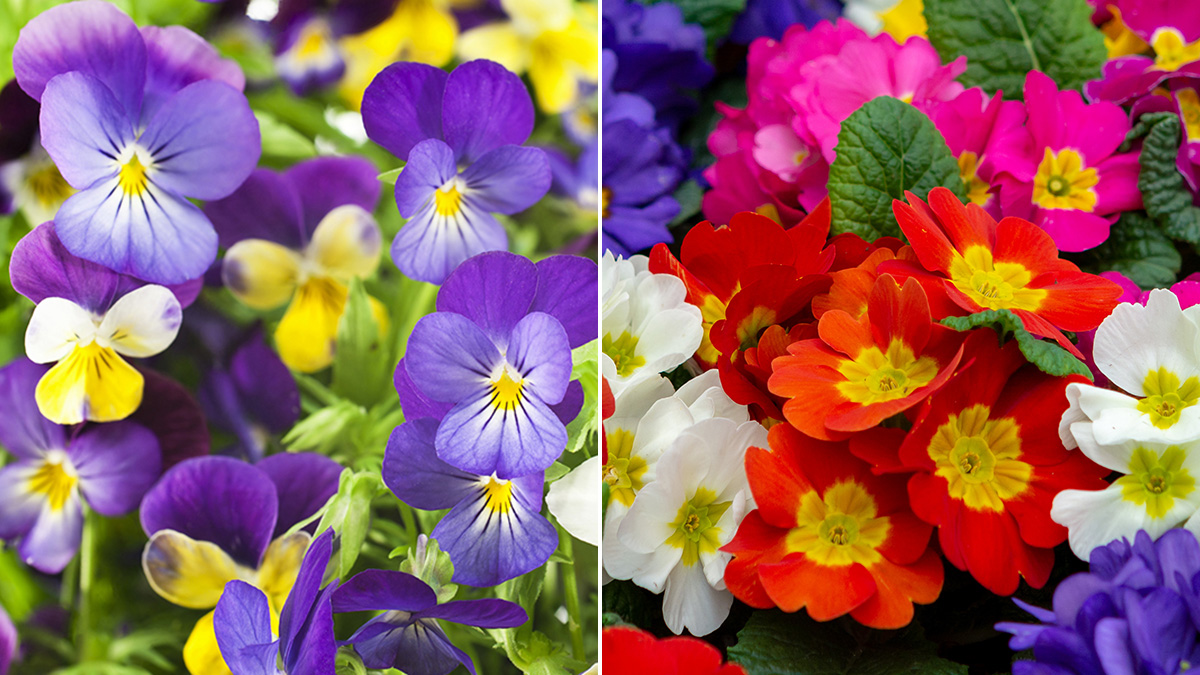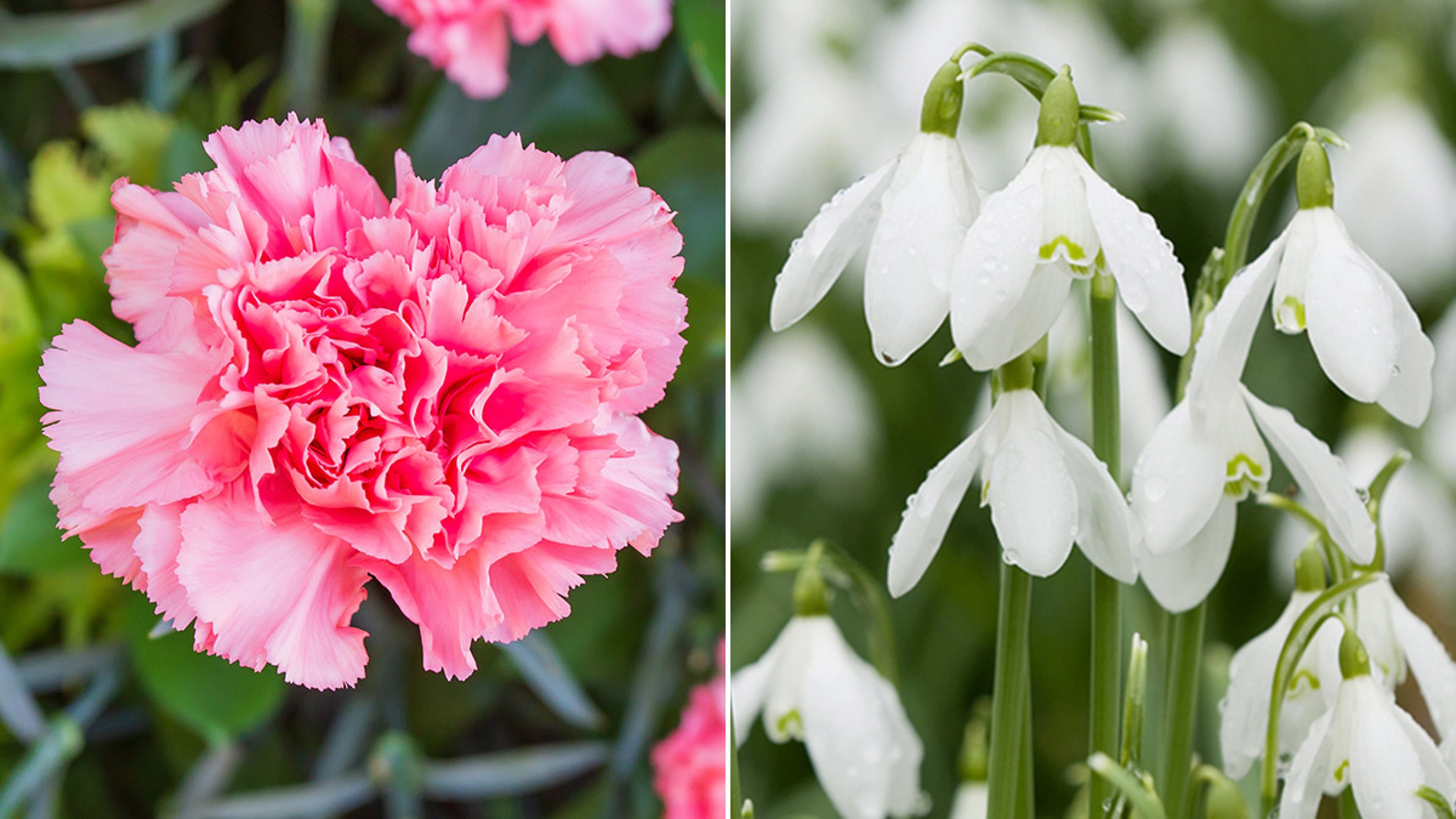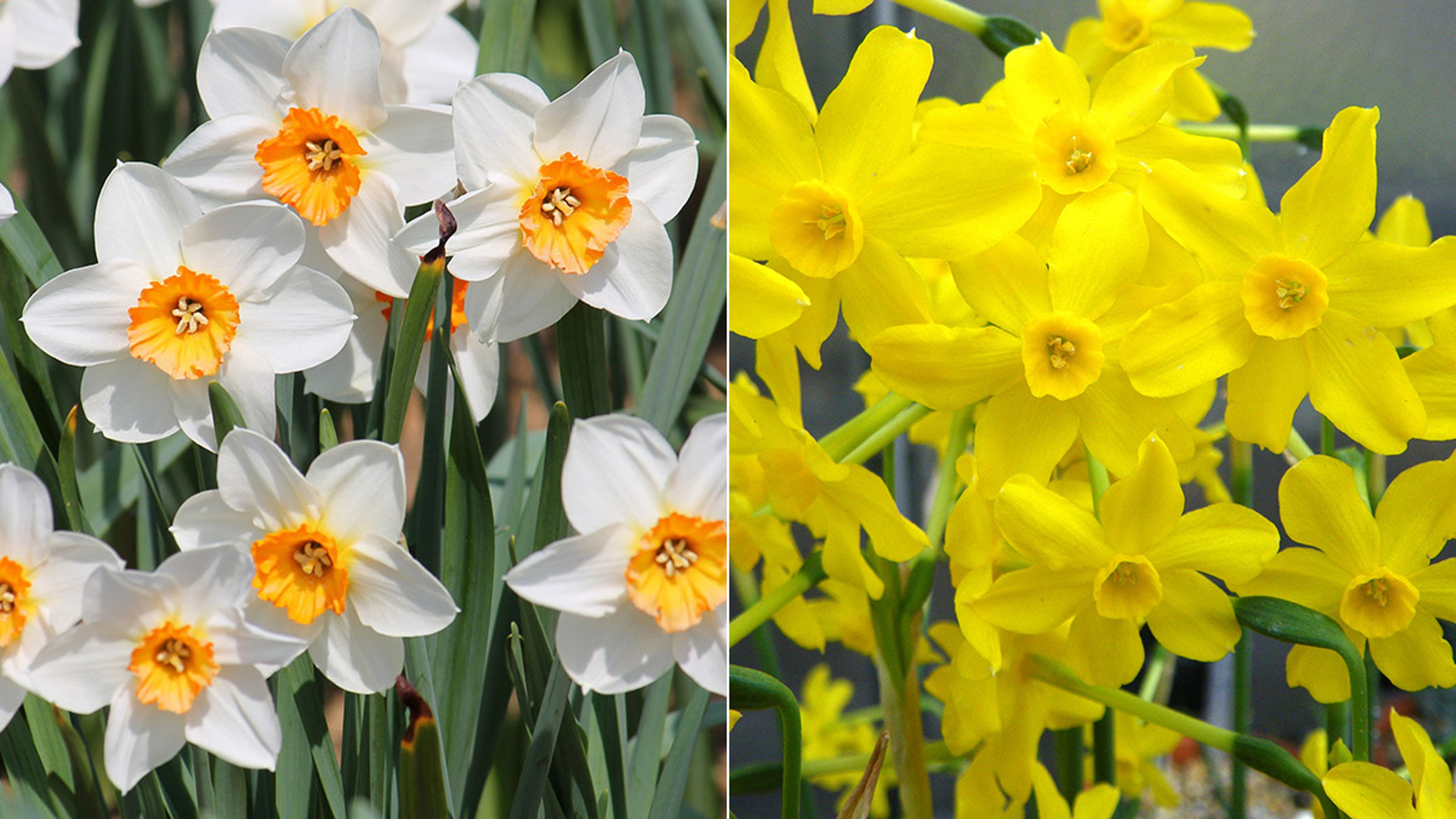February Birth Flowers: All About the Violet and Primrose
These charming blooms are as resilient as they are striking to look at.
Jan 03, 2024
As February unfolds, nature graces us with the delicate and charming presence of two birth flowers. These enchanting blooms captivate us with not only their visual appeal but with the stories they tell and the meaning they carry.
Whether exchanged as tokens of love or adorning our living spaces, these blossoms remind us of the beauty and resilience found in the natural world. Come with us as we learn more about these charming flowers that embody the magic of February and bring joy and positivity into our lives.
What are the February birth flowers?
The February birth flowers are the violet and primrose.

Violets (Viola) are known for their delicate appearance and sweet fragrance. They have five-petaled flowers that come in a variety of colors, including purple, blue, violet, white, and yellow; some are even multi-colored. Their leaves are often heart-shaped or rounded with scalloped edges. The growth habit, size, and habitat of violets vary widely depending on the species and variety; they do, however, tend to thrive in cool, shaded environments.
Primroses (Primula) are perennial plants that are one of the first flowers to bloom in late winter or early spring. Their flowers have a distinctive saucer-like shape with five-petaled blossoms, and they feature in a wide range of colors, including pink, purple, red, yellow, white, and even bi-color varieties. The leaves of primroses often form a rosette at the base of the plant, and some varieties emit a mild, sweet fragrance. Primroses thrive in cool, temperate climates and are well-suited for shaded or partially shaded areas.
What is the history of violets?
The use of violets dates back to ancient Greece, where the flower was associated with love and fertility. Legend has it that the Ionian philosopher and mathematician Pythagoras cultivated violets for their calming properties. In Rome, violets were used in perfumes and as a symbol of love and affection.

In the Middle Ages, violets were cultivated in monastic gardens for their purported healing properties and were often used in herbal remedies. During the Renaissance, violets became a favorite motif in art and literature, symbolizing love, faithfulness, and modesty.
Today, in addition to being cultivated for their ornamental value, violets are used for both culinary and medicinal purposes. Violet petals show up in recipes for salads, desserts, and beverages, and the flowers have been shown to hold therapeutic properties, including anti-inflammatory and expectorant effects.
What does the violet mean?
The meaning and symbolism of violets have changed over the years. In the Middle Ages, violets represented chastity, modesty, and faithfulness. During the Victorian era, men gave violets to the women they admired, with purple violets meaning “I'll always be true to you" and cream-colored violets conveying the message “Let's take a chance on love together."
As violets are among the first flowers to bloom in spring, they are also seen as symbols of renewal and the arrival of warmer, brighter days. Violets are often considered symbols of femininity, and are associated with goddesses and female deities in certain cultures.
Today, violets symbolize things like young love, innocence, and joy, making them a popular choice for expressing romantic feelings.
How to care for violets
Violets adapt to nearly any environment, having been seen growing in both dry deserts and wet rainforests.

- Sunlight: Violets thrive in locations with filtered sunlight or dappled shade; therefore, plant them in partial to full shade. Avoid exposing your violets to intense, direct sunlight.
- Soil: Use well-draining, slightly acidic soil. A mix containing peat moss, perlite, and vermiculite is suitable.
- Watering: Keep the soil consistently moist but not soggy. Water when the top inch of soil feels dry to the touch.
- Temperature: Violets prefer cool to moderate temperatures. Indoor violets generally thrive in temperatures between 60 and 70 degrees. Outdoor violets can tolerate cold temperatures but may benefit from protection during harsh winter conditions.
- Fertilizing: Feed violets with a balanced, water-soluble fertilizer during the growing season (spring and summer).
3 interesting facts about violets
- French emperor Napoleon Bonaparte loved violets so much that after his wife, Josephine, died, he covered her grave in dozens of violet petals.
- William Shakespeare made references to violets in several of his plays. In "A Midsummer Night's Dream," Oberon mentions the "little western flower," believed to be a reference to the violet.
- The violet's association with modesty can be traced back to the story of the Greek goddess Artemis. According to Greek mythology, each of Artemis' nymph friends swore to stay maidens for their entire life. After Artemis' brother Apollo chased the nymphs relentlessly, Artemis had no choice but to protect them from her brother by turning them into violets.
What are the best February birth flower gifts?
These lovely gift options showcase everything we love about the February birth flowers.
What is the history of primrose?
Primroses are believed to have been cultivated as ornamental plants as far back as ancient Rome. The Latin name "Primula" is derived from the Latin word "primus," meaning first, which reflects the plant's early springtime flowering.
Later on, primroses became popular ornamental plants in gardens across Europe, cultivated not only for their beauty but also their potential medicinal benefits. In the Middle Ages, these perennials were used to treat such afflictions as arthritis and paralysis.
Primroses have been associated with various folklore and superstitions. For example, according to Celtic beliefs, the primrose is sacred and the key to heaven, and Irish people commonly placed it in doorways as a signal to fairies to keep their homes safe.

What does the primrose mean?
Primroses are often associated with young love and early affection. In the language of flowers, they convey sentiments of budding romance, making them popular choices for expressing feelings in matters of the heart.
As early bloomers in the spring, primroses also symbolize hope, optimism, and the promise of brighter days ahead.
As with many other flowers, the color of primroses can influence their symbolism. For example, yellow primroses are often associated with positivity and joy, while pink primroses may convey feelings of affection and gratitude.
How to care for primrose
Primrose is hardy and adaptable to most environments. And, unlike other early-blooming flowers, this perennial can stay open until late spring.

- Sunlight: Primrose prefers locations with filtered sunlight or dappled shade, so planting them in partial to full shade is best.
- Soil: Use well-draining, humus-rich soil for primroses. A mix containing peat moss, perlite, and compost works well.
- Watering: Keep the soil consistently moist but not soggy. Water when the top inch of soil feels dry to the touch. Water primroses at the base to prevent wetting the foliage, which can lead to fungal issues.
- Temperature: Primroses prefer cool to moderate temperatures. Protect outdoor primroses from extreme cold temperatures, and provide insulation, such as a layer of mulch, during winter.
- Humidity: Primroses appreciate higher humidity levels. Increase humidity by placing a tray of water near the plants or using a humidifier, especially in dry indoor environments.
- Fertilizing: Feed primroses with a balanced, water-soluble fertilizer during the growing season (spring and summer).
3 interesting facts about primrose
- Primrose Day is observed in the United Kingdom each year on April 19 to commemorate the death of British Prime Minister Benjamin Disraeli, who had a fondness for the flower.
- In the popular young adult series "The Hunger Games," the younger sister of main character Katniss Everdeen is named Primrose Everdeen. She is named after the evening primrose, a flower known for its healing qualities — just like the character herself.
- Shakespeare introduced the phrase "the primrose path" in his play "Hamlet." It means taking the easy way out of a difficult situation.




















